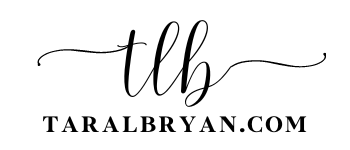There is a common misconception out there for a lot of our clients and a lot of other people who are looking to do learning projects and that misconception is that there needs to be content already organized and put together before you get started and that’s just not necessarily the case.
What we really want to do is we want to look at the topic from a performance standpoint “what is the business challenge or learner challenge” that’s happening that you’re noticing and then from there trying to figure out what would take to solve that particular challenge that goes beyond the content
and that happens way before we start looking at specifically what kind of materials and assets and content do you have that would help to reinforce and and really teach that message.
So one of the things that I love is a quote from Dov Gordon and it says that he says that that everything kind of boils under two different things:
You have a problem that you have that you don’t want or you have a result that you want but you don’t have right so what you’re trying to do is solve for that. You’re taking that learner on a transformation what is happening today and what do they need to be able to do differently in the future and that’s really the essence of why you’re creating a learning experience. Is taking someone from where they are today and transforming them into a new level of performance or knowledge or whatever the outcome is that you’re looking for but at the essence regardless of what it is you’re trying to help them solve a problem that they have and they don’t want or help them achieve a result that they want that they don’t yet have and so looking at it from those two perspectives is critical to start the process the other sort of secret to this is that we need to look at that from two different perspectives.
This is really what we do at the beginning of our process.
So the first perspective is from a business outcome perspective so what’s going on in the business what’s the business problem or challenge or what’s the result that the business is looking for so this plays out in there’s an increase in the employee turnover there’s an increase in customer complaints or things being shipped incorrectly there’s an increase in some sort of goal that’s not happening or some sort of issue that’s going on in the organization or there’s a result that the organization is hoping to get to and they’re not there yet and they want to get there so they need to think about what is that particular result from a quantifiable standpoint as much as possible that they want that they don’t yet have right so that’s the organizational aspect of it when we’re looking at business metrics we really want to try and identify what’s that before and what’s that after both from a qualitative and quantitative perspective.
So looking at both of those touch points the other piece of the puzzle here is looking at that same set of criteria for the learners because the learners are going to have different pain points and different challenges in different ways to get there then what that business result looks like right so while an increase in turnover could be something going on with the organization from an individual or learner perspective the reason for that may be totally different than the reason you would put together from a business perspective so it could be that there’s process has been created but maybe hasn’t been communicated maybe there’s some inconsistency in how process or systems have been applied maybe there’s some tribal knowledge differences right some people who have been with the company longer have a certain skill set where people new to the organization don’t have that skill set and they need to get to that place of everyone being at the same level competency so we need to look at that learner piece too so what’s the problem or pain that that learner has why don’t they what are they doing what the activity is that they need to be doing on the job.
This is probably the place to point out that it’s sometimes not a training issue but looking at those particular symptoms of what’s going on from you know the you know learner has a problem that they want to solve so they can perform better on the job because at the core everyone wants to come and do their best work every day in their in their job and if there’s something that’s in the way they can’t do that so what is that problem or what is the result that they are hoping to achieve but they just can’t get there right they don’t they don’t know how to get there they don’t know what to specifically do they haven’t had any practice those kinds of things that’s a result that they’re hoping to get and they need that scaffolding and sequencing to get there so looking at it from this perspective you can see how we’re not even at the content yet we’re not at what is the specific things that they need to have tools assets resources information in order for them to be successful right now we’re trying to identify what is the problem that they have that they don’t want or what is the result that they want but they don’t have and really honing in on that what that is going to do is make sure that the learning experience that you’re creating is going to move the needle in the organization and not just provide additional information that then somebody has to figure out how to apply because we really want to make sure that what we’re creating is gonna make a change in the workplace it’s gonna make a difference in the in the way that somebody can do their job so they can become more successful.
Hopefully this was helpful today. I really wanted to get down to that common misconception that people have that you have to have all the content organized and in “big binders” and all that kind of stuff
before you get started because that’s really not where we start but we do then
just to kind of you know add on that is all of that’s really valuable and once we’ve answered some of these
questions and some additional questions that we’ll dig into in the next couple videos is that then we apply that content to what’s needed to actually allow someone to be able to solve that problem or get that result.
Until next time if you have any comments on this, I would love to hear your stories of how you’ve implemented this in your workplace do that in the comments below.
Thanks much,
Tara Bryan


